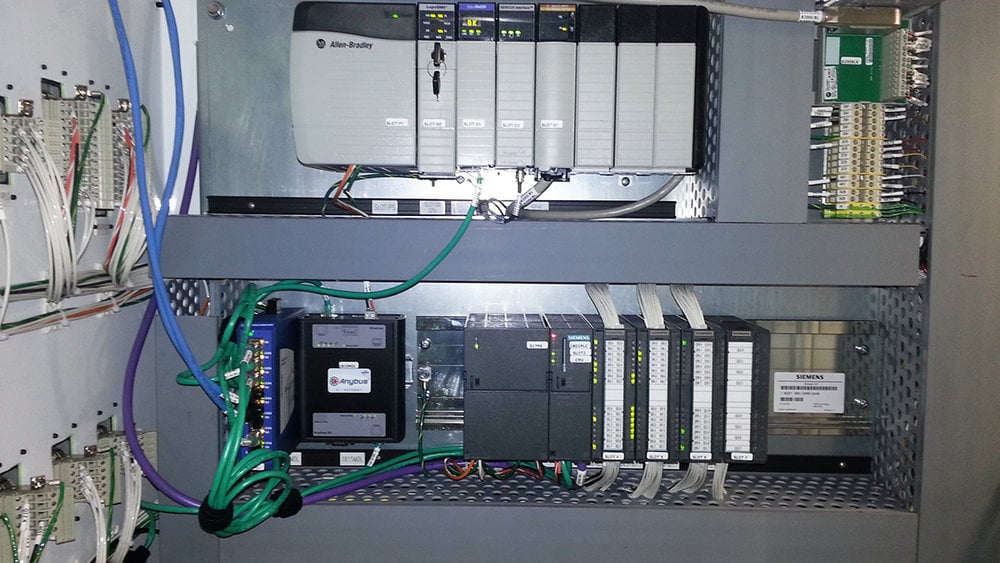www.industryemea.com
27
'13
Written on Modified on
Getting connected
How Nagel Precision in the U.S. connect their honing machines to any industrial network with the help of Anybus X-gateways.

Nagel Precision Inc. in Ann Arbor, Michigan is the U.S. subsidiary of German Nagel Maschinen- u. Werkzeugfabrik GmbH. They create machines for honing, superfinishing, and deep hole drilling which are used to manufacture engine blocks, transmissions, pinion gears, valves and other metal artefacts which require a very smooth surface. The machines are installed in manufacturing plants around the world by companies such as GM, Chrysler, KIA, Hyundai, and Ford to name but a few.
The network dilemma
Nagel Precision’s machinery is built on an EtherNet/IP-based control system with an Allen Bradley PLC, often with the Rockwell Kinetix 6000 Multi-Axis Servo Drives as the pivotal core. However, since the honing machines are exported to factories all over the world, Nagel was faced with the problem of how to communicate with other networks – especially PROFINET which is frequently used in car manufacturing plants.
“We first started out with third party network cards,” says Jim Saule, Information Technology Director at Nagel Precision Inc.” However, these were a bit cumbersome since they required a lot of configuration and were also quite expensive. It was also sometimes hard to find the correct card. That’s when I started investigating into the Anybus X-gateway from HMS. I liked the fact that you could support several different networks with the same configuration – something which would save us a lot of work.”
Costs cut in half
About two years ago, the first Anybus X-gateways were installed in Nagel Precision’s systems. The solution was delivered by HMS’s distributor in Michigan – McNaughton McKay Inc. The possibility to focus on the core business instead of network connectivity has been an important decision parameter for choosing Anybus – not to mention the fact that the gateways are half the price of the third-party cards.
“We don’t want to understand every type of controller out there,” says Jim Saule. “We’d rather focus on perfecting our honing machines. Anybus X-gateways has allowed us to do just that. Furthermore, the third party network cards cost us about 1200-1500 dollars each, now we’re down to around half that cost for a gateway.”
How it works
If the honing machine is to be installed in a factory that runs EtherNet/IP, it can be connected directly and communicate on the network. But if the factory runs another network (for example PROFINET), an Anybus X-gateway is needed. The gateway works as a translator between EtherNet/IP and the factory system and “translates” parameters such as positioning data, status of the drives, start/stop commands etc. The communication stream is transparent on both sides of the gateway making the honing machine a separate node on the factory floor, fully able to communicate with the plant-wide network.
“We’ve been using the Anybus X-gateway for more than two years now and it has been flawless,” says Jim Saule at Nagel Precision. “I have been designing these types of systems for more than 20 years and really appreciate the fact that we can support several different networks with the Anybus X-gateway. This enables us focus on our core business – building honing machinery – rather than working with compliance for different networks. I would definitely recommend any machine builder to look into Anybus, the variety is great and there are substantial savings to be made,” finishes Jim Saule.

The Anybus X-gateway allows Nagel’s Allen Bradley PLC to communicate with any other industrial network. The above example uses a Slave-Adapter X-gateway between the EtherNet/IP-based equipment on the top rack and the PROFINET-based equipment on the bottom rack.

Schematic image of how it works.

